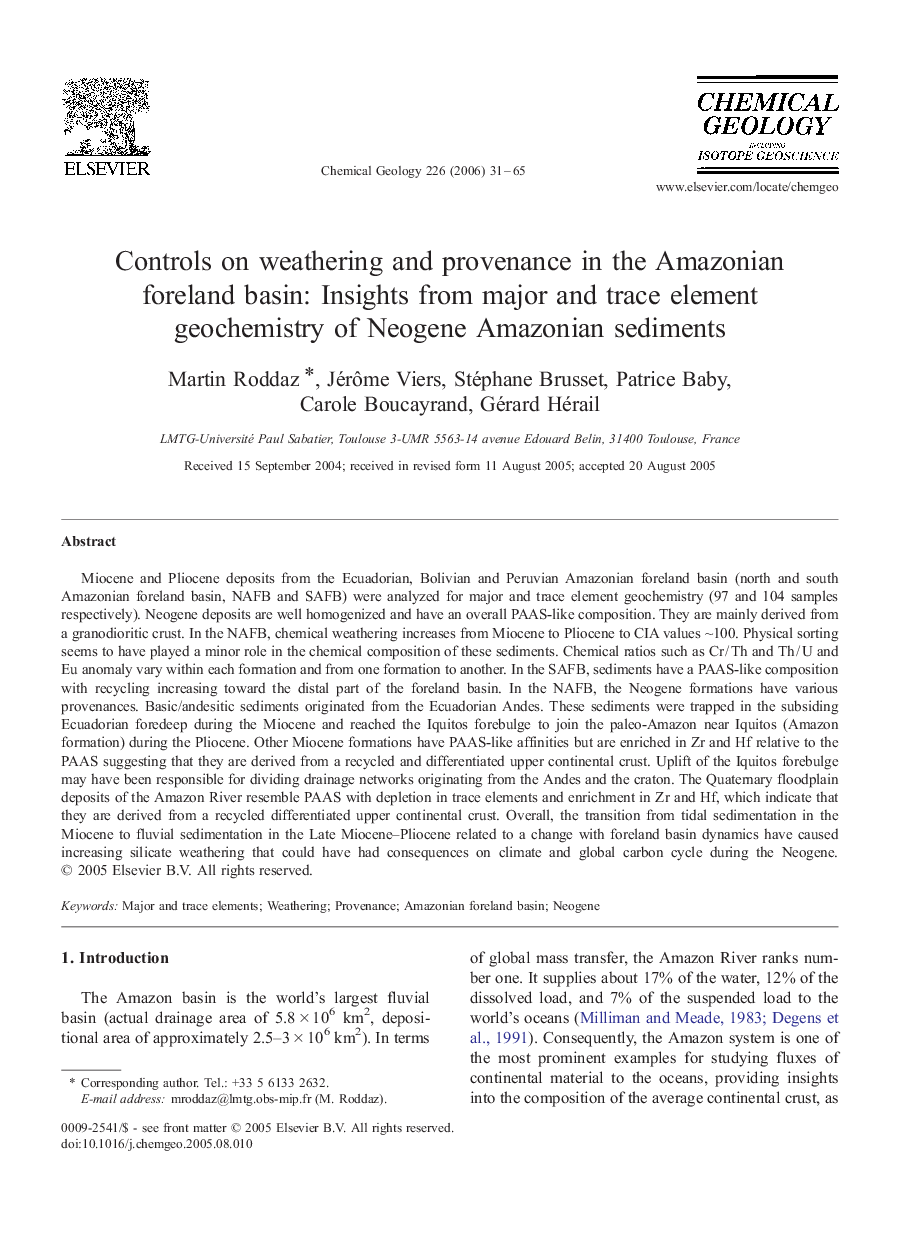| کد مقاله | کد نشریه | سال انتشار | مقاله انگلیسی | نسخه تمام متن |
|---|---|---|---|---|
| 4701447 | 1637775 | 2006 | 35 صفحه PDF | دانلود رایگان |

Miocene and Pliocene deposits from the Ecuadorian, Bolivian and Peruvian Amazonian foreland basin (north and south Amazonian foreland basin, NAFB and SAFB) were analyzed for major and trace element geochemistry (97 and 104 samples respectively). Neogene deposits are well homogenized and have an overall PAAS-like composition. They are mainly derived from a granodioritic crust. In the NAFB, chemical weathering increases from Miocene to Pliocene to CIA values ∼100. Physical sorting seems to have played a minor role in the chemical composition of these sediments. Chemical ratios such as Cr / Th and Th / U and Eu anomaly vary within each formation and from one formation to another. In the SAFB, sediments have a PAAS-like composition with recycling increasing toward the distal part of the foreland basin. In the NAFB, the Neogene formations have various provenances. Basic/andesitic sediments originated from the Ecuadorian Andes. These sediments were trapped in the subsiding Ecuadorian foredeep during the Miocene and reached the Iquitos forebulge to join the paleo-Amazon near Iquitos (Amazon formation) during the Pliocene. Other Miocene formations have PAAS-like affinities but are enriched in Zr and Hf relative to the PAAS suggesting that they are derived from a recycled and differentiated upper continental crust. Uplift of the Iquitos forebulge may have been responsible for dividing drainage networks originating from the Andes and the craton. The Quaternary floodplain deposits of the Amazon River resemble PAAS with depletion in trace elements and enrichment in Zr and Hf, which indicate that they are derived from a recycled differentiated upper continental crust. Overall, the transition from tidal sedimentation in the Miocene to fluvial sedimentation in the Late Miocene–Pliocene related to a change with foreland basin dynamics have caused increasing silicate weathering that could have had consequences on climate and global carbon cycle during the Neogene.
Journal: Chemical Geology - Volume 226, Issues 1–2, 16 February 2006, Pages 31–65